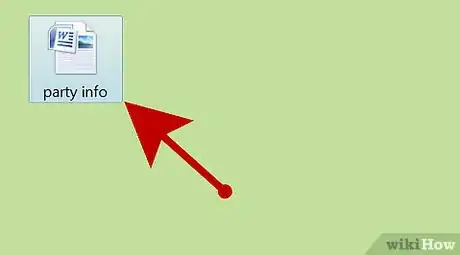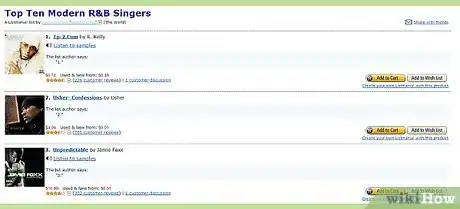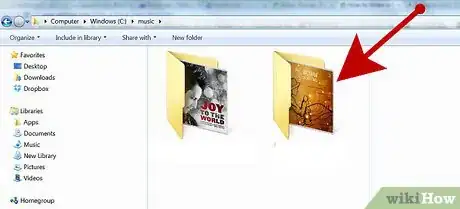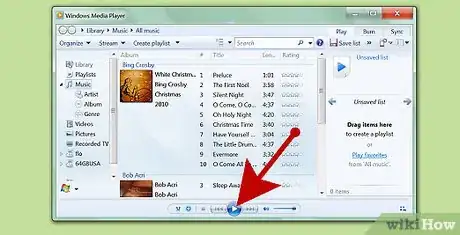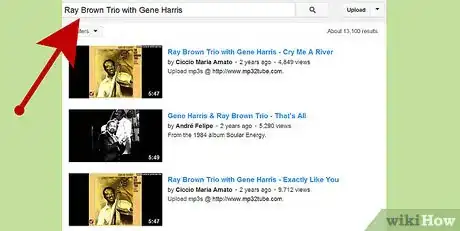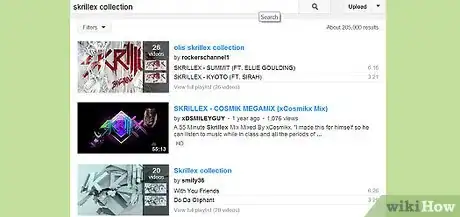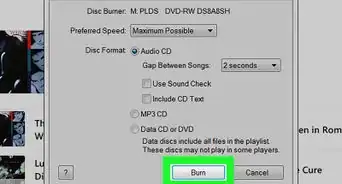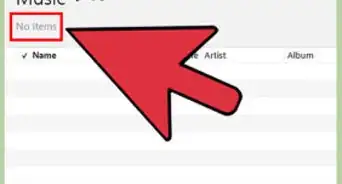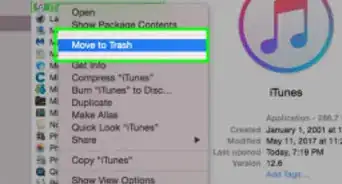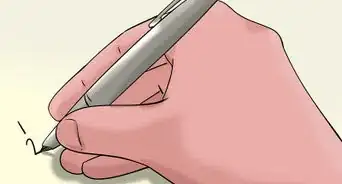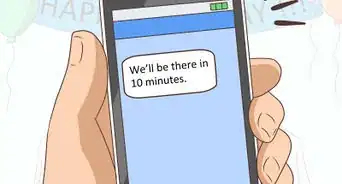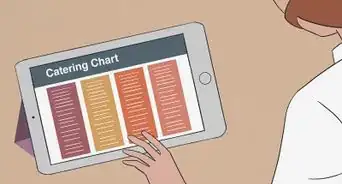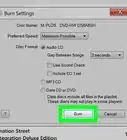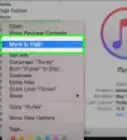X
wikiHow is a “wiki,” similar to Wikipedia, which means that many of our articles are co-written by multiple authors. To create this article, 29 people, some anonymous, worked to edit and improve it over time.
wikiHow marks an article as reader-approved once it receives enough positive feedback. In this case, 93% of readers who voted found the article helpful, earning it our reader-approved status.
This article has been viewed 151,726 times.
Learn more...
Making a party mix of music for your next social event is one of the most fun parts of planning the event. Read the steps below for good advice and ideas on how to make your next mix truly great.
Steps
Method 1
Method 1 of 2:
Basic Strategy
-
1Start with numbers. Think in terms of demographics: how many people did you invite, and how many do you expect to show up? Is anyone bringing a friend? Will there be drop-ins? What's the age and general situation of your guests? 16-year-old suburban teenagers aren't going to like the same music as 30something professionals. Also, think about how long you want the party to last. A three-hour mix and a six-hour mix call for different strategies.
- It's better to overestimate than underestimate when it comes to things like time and number of people. Think in terms of flex room rather than guessing at a specific number.
-
2Learn what makes good party music. Generally speaking, good party music is upbeat and doesn't require a lot of attention to appreciate. Songs with difficult or complex structures, and songs that shift from very loud to very quiet and back, should be avoided. Sad and depressing songs, no matter how well-liked they might be, don't have a place in a party mix (except possibly at the end, but more on that later).
- When in doubt, go with music that has a good beat and a catchy musical hook. Some genres are better at providing this type of music than others: Modern R&B, R&B-influenced pop, dance pop, hip-hop, reggae, and pop-punk are particularly reliable sources. Classical music, singer-songwriter style folk, new age, and melancholy indie rock (like Neutral Milk Hotel and Modest Mouse) should be avoided, in most cases.
Advertisement -
3Gather music. If your music collection is all or mostly digital, collect any extra albums or songs you think you might want to use. If you're working with a physical collection, gather it all in one room. Either way, go through everything you have. Listen to bits of albums and songs, and write down anything that seems like it might make good party music, even if you aren't sure. The goal is to have a nice wide base of songs to work with.
-
4Set a balance. Most audiophiles have a deep-seated urge to share their new discoveries and lesser-known music with friends, and a party mix is certainly an acceptable place to introduce relatively obscure acts to the people you know. However, the cardinal rule of making a great party mix is to lean more towards songs people will recognize. People just enjoy party music more when they already know how most of the songs go. Remember, being a good host is about making your guests happy, not satisfying your ego.
- No more than 15-20% of your final mix should be unknown or obscure music, as a rule. This is flexible, of course, but it's a good rule of thumb for most ordinary kinds of party. Populate the rest of your mix with popular, catchy artists from the past and present, such as Justin Timberlake, OutKast, Beyonce, Hall and Oates, Kendrick Lamar, The Doobie Brothers, Drake, and Michael Jackson.
-
5Decide on a digital method. If you're working with all digital music, you have two basic choices: shuffle, or no shuffle. A playlist set to shuffle can be more fun for you, since you won't know which song is coming next, but it requires a more careful balance to prevent songs from the same artist playing back-to-back. On the other hand, not shuffling a playlist allows you to set moods for different parts of the night (which would require a separate playlist for each mood if you shuffle).
-
6Decide on a physical method. If you're using burnable CDs instead, the options are slightly different. Physical media users will have to set songs in a specific order, but can shuffle CDs individually. Combined with only around 80 minutes of audio will fit on one CD-R disc, this means you can combine both methods and play the discs in a set order but with shuffled tracks. You can also simply follow a set order for each disc and song, or (if you have a multi-tray CD player) load up a few discs and shuffle between them.
-
7Think about the flow of the party. Most party mixes go one of two ways: loud and fun from start to finish, or spaced out along a set trajectory. Either method is fine, but if you're not going to shuffle, it's best to go with the second option. Generally speaking, you can set the first half hour or so to be a bit quieter and slower, and plan for a similar break a few hours into the mix. The music should still be fun to listen to, but it can ramp up to a higher energy level slowly.
-
8Make a closing list. No matter which method you choose to pursue, plan to have an hour or so of slow, relaxing music set aside (in a different playlist or on a separate disc). You can put this music on when you're done hosting the party for the night, to encourage people to wrap up and head home. Pink Floyd's Dark Side of the Moon was once a very popular choice for ending the party; other viable options include artists such as DJ Krush, Belle and Sebastian, or the Replacements. Pick music with waning energy and a quieter sound.
-
9Put your music together. Listen to the beginning of each song in order and be sure you're happy with it. (If you're shuffling, do this anyway to be sure all the songs work well together.) Once you're satisfied, save the mix (digital) or burn it to discs (manual) and you're all set.
- If you're playing music from a phone or mp3 player, be sure you have a cable to route the sound through your stereo speakers. These can be purchased for a few dollars at most home electronics stores.
-
10Play your mix. There's an art to knowing when to start playing. You can start the music as soon as the first guest arrives, but if you wait for a half hour and start when a few more people show up, you'll get a better effect. The starting time ultimately depends on the type of party you're having, and how many friends you expect to show up. Some variations and specific situations are covered in detail below.
Advertisement
Method 2
Method 2 of 2:
Alternatives and Special Situations
-
1Host a dinner party with class. If the party you're throwing is a small dinner party for 4-12 people, there's no need to make a huge mix, and certainly no call for danceable music. Instead, help everyone relax and feel elegant by putting on some classic jazz. Not just any jazz album will do; look for famous performers, and lean towards variations on songs rather than original compositions (though these are also fine in moderation). You should only need a few albums' worth of music, at most.
- Don't shuffle your jazz; instead, go through each album in turn, from beginning to end, preserving the intended mood.
- As for era, stick to the 20 years between 1951 and 1971. Jazz from this period has a classic jazz sound that most people find relaxing and sophisticated.
- Consider these albums as useful starting points: Solar Energy, Ray Brown Trio with Gene Harris; Time Out, Dave Brubeck Quartet; Kind of Blue, Miles Davis; Idle Moments, Grant Green.
- You can also try an album of bossa nova (such as Antonio Jobim's excellent Wave) or other “relaxed” sounding music, but be careful not to make your guests feel as though they're listening to elevator music.
-
2Make your mix interactive. This works best with a collection of CDs or LPs, but can be approximated with a digital music player. Before the party, set aside every album that's not suitable for the party, leaving only good party albums out in the main area. Put one on as guests begin to arrive, and leave the albums prominently displayed so that people can look through them. Offer to let people play albums, a few songs (or one side) at a time, one pick per person. Your guests will have another activity to play around with, and you can rest assured that only the chosen albums will be played.
- To be safe, don't leave out any albums that would be difficult or expensive to replace if broken. Parties have been the bane of many a breakable item.
-
3Create a themed mix. Themed mixes aren't only useful at theme parties; they're also a great way to show off a collection that has some depth, and can provide some additional structure to a more public event (like a neighborhood block party). Simply look at your collection and make mixes of your favorite songs from genres you collect or have a special interest in. You can even make more tightly themed mixes for specific parties, such as a maritime theme or a desert theme. People love it when the music matches up to the theme of the evening.
- An early rock, rockabilly, and bebop mix is great for a sock hop or retro-themed gathering.
- Funk and classic '70s soul lend a lush, decadent air to any warm summer night.
- Split your mix between EDM (Skrillex, Tiesto, the Chemical Brothers) and IDM (Bonobo, Aphex Twin, Modeselektor) to create a soundtrack for a rave. (You can learn to crossfade and match beats to make it feel even more authentic, but that's not covered here).
Advertisement
Community Q&A
-
QuestionWhat do you think is the best party playlist?
 Community AnswerThat really depends on your personal taste in music, and what the guests like. Generally, you can't go wrong with pop music. If you have Spotify, there are plenty of party playlists ("Summer Party," "Dance Party," "Tailgate Party," etc.) you can choose from if you don't want to make your own.
Community AnswerThat really depends on your personal taste in music, and what the guests like. Generally, you can't go wrong with pop music. If you have Spotify, there are plenty of party playlists ("Summer Party," "Dance Party," "Tailgate Party," etc.) you can choose from if you don't want to make your own. -
QuestionIs it okay to play hardcore, techno, and/or drum n' bass at a house party?
 Community AnswerAs soon as the music is relevant and not extremely loud on people's ears, yes, you can play it.
Community AnswerAs soon as the music is relevant and not extremely loud on people's ears, yes, you can play it.
Advertisement
Warnings
- Have fun with your mix, but don't invest too much of yourself into it. A party mix is very different from a mixtape. It's made to lubricate the party, not be closely analyzed by every guest. Don't let it bother you if people don't notice the music, or if one or two people complain about a particular song. They'll live; so will you.⧼thumbs_response⧽
Advertisement
About This Article
Advertisement
